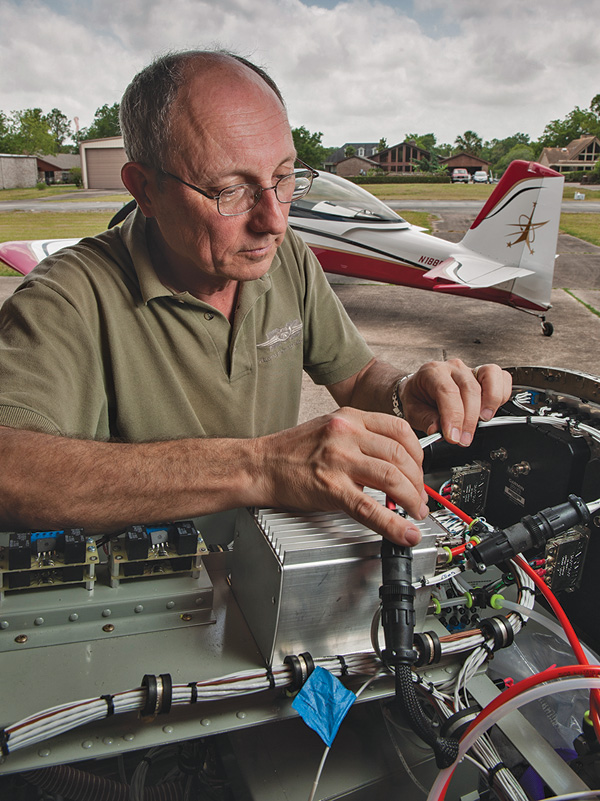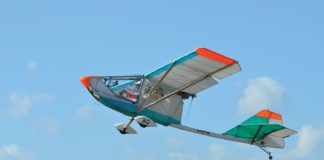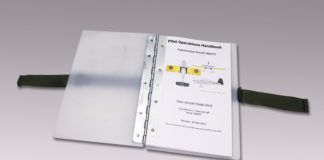Troubleshooting is an art—an art based on experience, knowledge—and sometimes a little luck. I have been building and fixing things all my life, and there are still times that I run down a primrose path that leads me to a desert devoid of answers. And that is when I remind myself of Occam’s razor. No, you don’t buy it in a drugstore—it’s the name of a process.

According to Wikipedia, Occam’s razor is a principle of parsimony, economy, or succinctness used in problem solving that was devised by William of Ockham (c. 1287-1347). It states that among competing hypotheses, the one with the fewest assumptions should be selected. Other, more complicated, solutions may ultimately prove correct, but—in the absence of certainty—the fewer assumptions that are made, the better.
The razor has many different descriptions, but the way I like to think of it, the simplest possible solution is the one to pursue. This works especially well with simple systems or mechanisms—like a Lycoming-type engine. So long as the crank is turning freely, the pistons are going up and down, and the valves are opening and closing, the only thing you need to get a Lycoming to run is air, fuel, and spark. If it’s not firing, assume that it is missing one of those three items and look for the simplest solution.
Has it got fuel? Well, that’s easy to figure out—make sure there’s something in the tank and the valve is open. Want to still be sure? Take off the fuel line at the servo or carburetor and turn on the fuel pump—does it flow? Airflow is even easier to determine—is there anything obstructing the inlet? Does the throttle plate open? If yes, check that off the list.
Spark, of course, needs to be present—and at the right time (although it is astounding how far out of time an engine can be and still “run.” I use quotes because it won’t run very well). I had an unfortunate experience with a used flywheel once that had me time the mags 120 off—and it still started! Ran fine at about 1500 rpm, but backfired like crazy when we throttled back.
How about if it won’t crank? Well, you need a charged battery, a starter that will engage and then turn, and if there is a solenoid in between, it has to go “click” and conduct massive amounts of juice. There aren’t many things that can go wrong, and they are easy to check—so why start thinking that you have been attacked by cosmic rays, or some complicated failure has occurred in your battery that allows you to listen to the radio, but not crank the engine (that’s not very complicated), or a witch doctor has put a curse on your machine? Look at the simple things first.
Sometimes, we know in our hearts that the problem is serious, but we hope against hope that the problem is actually minor. A good example is when you do a compression check and find a low cylinder, with air coming out of the dipstick. No one wants to pull a jug and find that you have a broken ring or glazed cylinder walls, so we make up all sorts of excuses like the ring gaps all being lined up, or maybe it was just too cold to do a good compression check. Lycoming says you can button it up and go fly an hour or two, and that’s a good idea. But when you come back and get the same results, you might as well get out the cylinder-base wrenches—the ring gaps lining up is just not going to cut it as an excuse.
Electrical problems are where we always try and get creative—electricity is, after all, pretty much magic to many, so why not assume that the problem is magical? When someone tells me that all of the LED indicators in their cockpit light up when they transmit, I don’t start talking about ferrite beads, separating antenna wires from signal wires, or reloading software—I ask if they have a cheap wire-whip antenna in their all-metal airplane. The answer is usually yes, in which case I then point out that they left too much of the core unshielded next to the antenna. No one wants to hear that if the end of the antenna is under the floor, but nevertheless, that is going to be the answer.
If you find yourself constructing a complicated rationale to describe a problem, you are violating Occam’s razor and heading down a path that will probably not take you anywhere. Landing gear seem to be loose? Most likely a hole has wallowed out, or a bushing has failed. Problem getting your RV to cool right? Look at what you have changed from the factory drawings; thousands of them are working just fine, built to plans. If you changed something, that is the most likely culprit—not some strange interaction of flow and the Vernatherm.
You may not like the answer you are going to get when you take the simple path—it sometimes leads to a major structural rework, or an engine overhaul—but Occam doesn’t say you’re going to like his answer—only which is most likely. When a light that has been working stops working, suspect the bulb or a wire that has come undone, or you blew a fuse. I had a crimp come undone on a landing light wire on one of our planes recently. Rather than taking the whole wingtip off to start my troubleshooting, I looked under the panel, assuming that the wire was continuous from the fuselage to the tip. Sure enough, the bad crimp was in a splice six inches from the switch. That saved taking off 60 screws.
Use your head—and Occam’s razor—the next time you have a problem. Don’t reach for the wrenches first. You’ll save time and look like a genius to your friends when you go right to the trouble spot without first going down some dead ends. Look for the simple, not the complicated. Remember, if you hear hoof beats, think horses—not zebras. Unless, of course, you happen to be in Africa.













